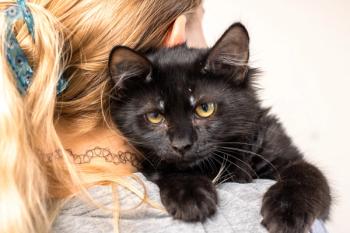
CDC warns of rabies risks following Maryland feral cat outbreak
Community programs offering veterinary preventive care for free-roaming cat colonies can help mitigate public health risks, the CDC says.
Earlier this year, the CDC published a report on a rabies outbreak in an urban feral cat colony in Maryland and issued a reminder on the need for public education on rabies prevention and the health risks linked to feral feline populations. According to the CDC, a rabid feral cat was identified in August 2024, leading to 3 people requiring postexposure prophylaxis—a preventive treatment administered after a person or animal has been exposed to a disease.
According to the report, which was published in the CDC’s August 21 Morbidity and Mortality Report, the Cecil County Health Department notified the Maryland Department of Health that an aggressive feral cat had been captured and euthanized and later tested positive for rabies.1 The cat interacted with multiple people, leading health authorities to believe that more than 300 people had been exposed to the rabies virus. As a result, a contact-tracing initiative with local animal control, Maryland Department of Health officials, and the CDC was launched.
Ultimately, health officials determined that the number of people needing PEP was lower than first anticipated. The report noted that the cat belonged to an unmanaged colony of approximately 20 cats and kittens in Baltimore County, Maryland. Additional cats from the colony were captured and euthanized, but later tested negative for rabies.
Still, the CDC said it is possible that other rabies cases in the colony might have occurred but went undetected or unreported.
“Unmanaged cat colonies, such as the one described in this report, can pose public health risks and require extensive resources to prevent adverse human and animal health outcomes,” the federal agency continued. According to the CDC, managed cat colonies have a designated caretaker or community program that tends to the colony, providing veterinary services like spaying, neutering, and vaccination, which includes the rabies vaccine.
“When cat colonies are managed, caretakers often attempt to maintain high rabies vaccination coverage and use sterilization programs to facilitate a natural phaseout of the colony,” the CDC emphasized, stating more research is needed to better understand how free-roaming cats interact in urban environments and how that may influence rabies transmission and human exposure.
The United States sees approximately 200 to 300 reports of rabid cats each year, making these felines the most commonly reported rabid domestic animal in the US. Still, more than 90% of animal rabies cases are associated with wild animals such as raccoons, foxes, bats, and skunks.1,2 Without prompt PEP treatment, a rabies infection is almost always fatal.1 However, human rabies cases are still rare, with less than 10% of human rabies deaths in the US reported each year.1
“The AVMA [American Veterinary Medical Association] policy on 'Free-Roaming Abandoned and Feral Cats' recognizes that while there is no single strategy for addressing unowned free-roaming cats in every situation, any intervention should include thoughtful consideration of multiple potentially competing factors including but not limited to, the welfare of the cats and wildlife themselves, the ecosystem in which the intervention will be conducted, and public health impacts."
The policy also states that appropriately managed colonies have the potential to significantly decrease risk to public health, wildlife, and ecosystems,” the AVMA wrote in response to the CDC report.3
References
- Ludmer S, Crum D, Wallace R, Hutson J. Rabies outbreak in an urban, unmanaged cat colony—Maryland, August 2024. MMWR Morb Mortal Wkly Rep. 2025;74(31):480-483. doi:10.15585/mmwr.mm7431a2
- Rabies in the United States: protecting public health. CDC. September 30, 2025. Accessed October 27, 2025. https://www.cdc.gov/rabies/php/protecting-public-health/index.html#cdc_generic_section_2-animal-rabies-surveillance-in-the-u-s
- CDC warns of rabies risks from feral cat colonies. American Veterinary Medical Association. October 16, 2025. Accessed October 27, 2025. https://www.avma.org/news/cdc-warns-rabies-risks-feral-cat-colonies
Newsletter
From exam room tips to practice management insights, get trusted veterinary news delivered straight to your inbox—subscribe to dvm360.






